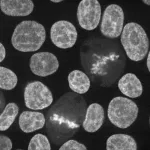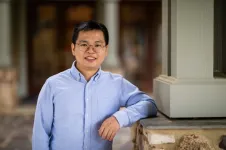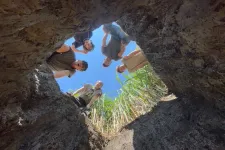(Press-News.org) DURHAM, N.C. -- Scientists are often trained to seek out the absolute best solution to a given problem. On a chalk board, this might look something like drawing a graph to find a function’s minimum or maximum point. When designing a turbojet engine, it might mean tweaking the rotor blades’ angles a tiny degree to achieve a tenth of a percent increase in efficiency.
Adrian Bejan, the J.A. Jones Distinguished Professor of Mechanical Engineering at Duke University, was busy demonstrating the former for a class full of students when a thought struck him: this is not how nature operates. Evolution is a sequence of design changes happening on their own in a discernible direction; it never weds itself to a single point on a drawing board. An evolving system or animal is free to simply go with what works. Not so much that its performance suffers greatly, but enough that it opens access to other options near the so-called optimal design.
With science often looking to nature for clues to solve challenges, Bejan wondered if he might look the opposite way, to predict nature before looking at it. If problem solvers and builders were free to miss the absolute highest mark, how much greater might be the range of designs they consider plausible?
That’s the question that Bejan posits in a new paper published online May 16 in the journal Biosystems. Using two relatively simple examples — walkways ferrying passengers off a train and a bird flapping its wings — he discovers that the answer is, “quite a lot.”
“In engineering, design, theater, architecture or even the organization of this university, any form of design benefits from the ability to make good but imperfect decisions and the freedom to move on and contemplate other opportunities for improvement,” Bejan said. “If one is wedded to the idea of the absolute best, nothing new will ever be created.”
In the paper, Bejan first looks at the example of passengers arriving by train and walking across a room with many exit points. With the total area of the room remaining constant but the length and width of the room free to change, he solves for the optimal shape of the room to get all passengers where they’re going the quickest. With the solution equations in hand, he shows that providing even 1% wiggle room for imperfection away from the best performance opens the design space by 28%.
In his second example, Bejan looks at the flapping motion of birds at nearly constant altitude and speed. Considering the various forces involved — drag during gliding, lift created by wing size, speed and body size, among others — he formulates an equation for the rhythm of wings needed to maintain constant speed with minimum effort. While an optimal answer does exist, Bejan once again shows that allowing for just 1% imperfection above the theoretical minimum effort opens the design space by 20%.
Bejan says that he chose these examples because they involved changing only a single variable, a single degree of freedom — the shape for a room or the flapping rhythm for a wing. In more complex examples that involve many variables, these tiny tolerances for imperfection create an even wider range of “good enough” solutions.
The lesson learned is that science now has a predictive idea of how nature works. By focusing less on finding absolute optimal designs, researchers may use the freedom to iteratively move toward entirely new design concepts that wouldn’t otherwise have been within their sight. It also gives designs, methods and entire fields of study the ability to adapt to a changing world.
“The doctrine of chasing the best design is not helpful,” Bejan said. “The teaching of science should go hand-in-hand with the freedom to take a shot, hit the vicinity of the mark and move on. The end goal isn’t just to hit a bullseye, but to keep more arrows in your quiver to keep taking shots over a long period of time.”
This work was supported by a grant from CaptiveAire Systems.
CITATION: “Perfection is the Enemy of Evolution,” Adrian Bejan. Biosystems, Volume 229, July 2023. DOI: 10.1016/j.biosystems.2023.104917
# # #
END
Perfection: The Enemy of Evolution
Freedom to miss the optimal mark opens a wide range of new designs over time
2023-05-18
ELSE PRESS RELEASES FROM THIS DATE:
From Seattle to space: Science that began at the Allen Institute blasts off to International Space Station
2023-05-18
SEATTLE — May 18, 2023 — This Sunday (May 21) at 2:37 p.m. PDT1, astronauts from Axiom Space in partnership with Cedars-Sinai will blast off to the International Space Station carrying cells from the Allen Institute for Cell Science, a division of the Allen Institute. There, Axiom Space astronauts will perform experiments and send real-time data back to researchers at Cedars-Sinai as part of their study on the effects of microgravity on human cells.
The experiments are part of the Ax-2 mission, funded by NASA and ...
Award to lay new ground for information extraction without relying on humans
2023-05-18
Considering the millions of research papers and reports from open domains such as biomedicine, agriculture, and manufacturing, it is humanly impossible to keep up with all the findings.
Constantly emerging world events present a similar challenge because they are difficult to track and even harder to analyze without looking into thousands of articles.
To address the problem of relying on human effort in situations such as these, Lifu Huang, an assistant professor in the Department of Computer Science and core faculty at the Sanghani Center for Artificial Intelligence and Data Analytics, is researching how machine learning can extract information without ...
Children’s Hospital Colorado Electron Microscopy Lab receives prestigious accreditation as Diagnostic Center for Primary Ciliary Dyskinesia (PCD)
2023-05-18
Aurora, Colo. (May 18, 2023) – Children’s Hospital Colorado (Children’s Colorado) announces its official Electron Microscopy (EM) accreditation and becomes one of only two sites in the nation certified in the use of electron microscopy to diagnose primary ciliary dyskinesia (PCD). This EM accreditation is granted by the PCD Foundation (PCDF), a patient-focused organization dedicated to providing resources for those with PCD, a rare and debilitating lung disease.
"Children’s Colorado’s Electron Microscopy Lab has a long history of providing specialized electron microscopic imaging for many disease ...
WVU researcher searching for ‘holy grail’ of sustainable bioenergy
2023-05-18
Searches for sustainable bioenergy and climate change solutions may be one in the same, according to a West Virginia University researcher.
Edward Brzostek, associate professor of biology, and his students at the WVU Eberly College of Arts and Sciences are creating mathematical models to predict how bioenergy crops will enhance and store soil carbon through a renewed five-year grant from the U.S. Department of Energy.
Brzostek said he believes the models could present a “win-win” that not only improves soil carbon but spurs renewable bioenergy from biological sources. This includes biofuels like corn ethanol and perennial grasses.
Soil ...
Conservationists propose “global conservation basic income” to safeguard biodiversity
2023-05-18
Publishing in the journal Nature Sustainability, a team of conservationists led by the Wildlife Conservation Society say that providing a “Conservation Basic Income” (CBI) – of $5.50 per day to all residents of protected areas in low- and middle-income countries would cost less than annual subsidies given to fossil fuels and other environmentally harmful industries.
CBI is an unconditional cash payment to individuals, similar to universal basic income (UBI)10 but targeting residents of important conservation areas. A Conversation Basic Income would support stewardship of ...
Study reveals key molecular interaction that sets the timing of our biological clocks
2023-05-18
Molecular clocks in our cells synchronize our bodies with the cycle of night and day, cue us for sleep and waking, and drive daily cycles in virtually every aspect of our physiology. Scientists studying the molecular mechanisms of our biological clocks have now identified a key event that controls the timing of the clock.
The new findings, published May 18 in Molecular Cell, reveal important details of the molecular interactions that are disrupted in people with an inherited sleep disorder called Familial Advanced Sleep Phase ...
Paleontology: Fossil fragments shed light on a new spinosaurid dinosaur in Spain
2023-05-18
A dinosaur specimen from Castellón, Spain represents a new proposed species of spinosaurid, reports a paper published in Scientific Reports. The identification of a potential new species suggests that the Iberian peninsula may have been a diverse area for medium-to-large bodied spinosaurid dinosaurs and sheds light on the origin and evolution of spinosaurids.
Spinosaurids comprise of different groups of dinosaurs that are often large, stand on two feet, and are carnivorous. Well-known examples of spinosaurids include Spinosaurus ...
Cost-related medication nonadherence and desire for medication cost information
2023-05-18
About The Study: In a national panel survey of 2,000 respondents in 2022, approximately 1 in 5 older adults reported cost-related medication nonadherence. Real-time benefit tools may support medication cost conversations and cost-conscious prescribing, and patients are enthusiastic about their use. However, if disclosed prices are inaccurate, there is potential for harm through loss of confidence in the physician and nonadherence to prescribed medications.
Authors: Stacie B. Dusetzina, Ph.D., of the Vanderbilt University School of Medicine in Nashville, is the corresponding author.
To access the embargoed study: Visit our For ...
Potential clinical and economic outcomes of over-the-counter hearing aids
2023-05-18
About The Study: In this cost-effectiveness analysis, provision of over-the-counter (OTC) hearing aids was associated with greater uptake of hearing intervention and was cost-effective over a range of prices so long as OTC hearing aids were greater than 55% as beneficial to patient quality of life as traditional hearing aids. Over-the-counter hearing aids may expand access to beneficial treatment for hearing loss and represent an efficient use of resources.
Authors: Gillian D. Sanders Schmidler, Ph.D., of the Duke University ...
Examining mental health, education, employment, and pain in sickle cell disease
2023-05-18
About The Study: The findings of this cross-sectional analysis of 2,200 individuals with sickle cell disease (SCD) suggest that employment status, sex, age, and depression are associated with pain frequency. Depression screening for these patients is warranted, especially among those experiencing higher pain frequency and severity. Comprehensive treatment and pain reduction must consider the full experiences of patients with SCD, including impacts on mental health.
Authors: Kelly M. Harris, ...
LAST 30 PRESS RELEASES:
Decoupling the HOR enhancement on PtRu: Dynamically matching interfacial water to reaction coordinates
Sulfur isn’t poisonous when it synergistically acts with phosphine in olefins hydroformylation
URI researchers uncover molecular mechanisms behind speciation in corals
Chitin based carbon aerogel offers a cleaner way to store thermal energy
Tracing hidden sources of nitrate pollution in rapidly changing rural urban landscapes
Viruses on plastic pollution may quietly accelerate the spread of antibiotic resistance
Three UH Rainbow Babies & Children’s faculty elected to prestigious American Pediatric Society
Tunnel resilience models unveiled to aid post-earthquake recovery
Satellite communication systems: the future of 5G/6G connectivity
Space computing power networks: a new frontier for satellite technologies
Experiments advance potential of protein that makes hydrogen sulfide as a therapeutic target for Alzheimer’s disease
Examining private equity’s role in fertility care
Current Molecular Pharmacology achieves a landmark: real-time CiteScore advances to 7.2
Skeletal muscle epigenetic clocks developed using postmortem tissue from an Asian population
Estimating unemployment rates with social media data
Climate policies can backfire by eroding “green” values, study finds
Too much screen time too soon? A*STAR study links infant screen exposure to brain changes and teen anxiety
Global psychiatry mourns Professor Dan Stein, visionary who transformed mental health science across Africa and beyond
KIST develops eco-friendly palladium recovery technology to safeguard resource security
Statins significantly reduce mortality risk for adults with diabetes, regardless of cardiovascular risk
Brain immune cells may drive more damage in females than males with Alzheimer’s
Evidence-based recommendations empower clinicians to manage epilepsy in pregnancy
Fungus turns bark beetles’ defenses against them
There are new antivirals being tested for herpesviruses. Scientists now know how they work
CDI scientist, colleagues author review of global burden of fungus Candida auris
How does stroke influence speech comprehension?
B cells transiently unlock their plasticity, risking lymphoma development
Advanced AI dodel predicts spoken language outcomes in deaf children after cochlear implants
Multimodal imaging-based cerebral blood flow prediction model development in simulated microgravity
Accelerated streaming subgraph matching framework is faster, more robust, and scalable
[Press-News.org] Perfection: The Enemy of EvolutionFreedom to miss the optimal mark opens a wide range of new designs over time




